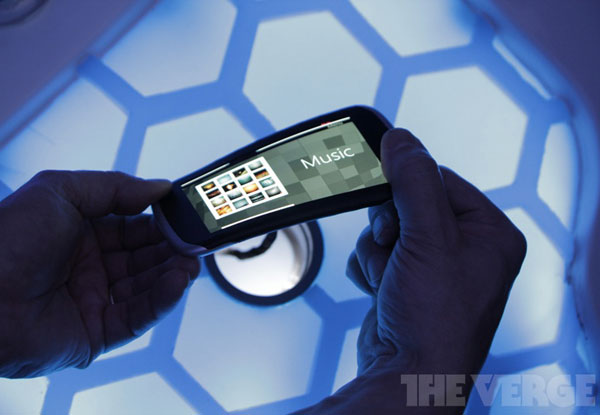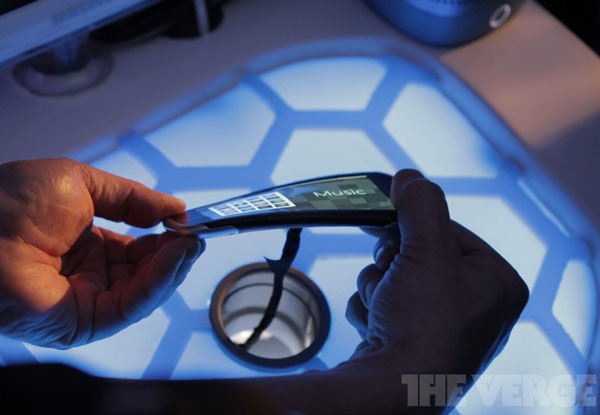
Along with the long-awaited Lumia 800 and 710, Nokia unveiled a unique OLED smartphone this week at Nokia World 2011 in London. Dubbed the Kinetic Device, the twisty and flexible device’s was shown off at Nokia’s Future Technology booth and features a UI that is wholly dependent on the way in which users interact with it, specifically by bending and twisting it to navigate its various functions.
The Kinetic Device is extremely flexible, and is comprised completely of durable and strong plastic, which includes an AMOLED display. In its current form, the Kinetic device simply contains the hardware required to power it, with none of the traditional functionality enjoyed in the current host of smartphones on the market. There is no GPS, camera, or capacitive touchscreen — with the tech demo focusing mainly on scrolling through photos and music albums.

As mentioned, the UI is quite simple and intuitive. Zooming in on pictures is done by bending the phone’s side back and bringing the center towards you, while changing the volume on the device is done with a twisting maneuver.

Of course the Kinetic Device is still in its infancy, and Nokia refused to outline or delve into the technology behind the flexible device. No doubt though the possibilities and applications with such are unique and ambitious, but time will tell whether Nokia will truly be able to transform this from a mere tech demo into something marketable and successful.
Take a look below for the Kinetic Device in action.
[Images Courtesy of The Verge]


